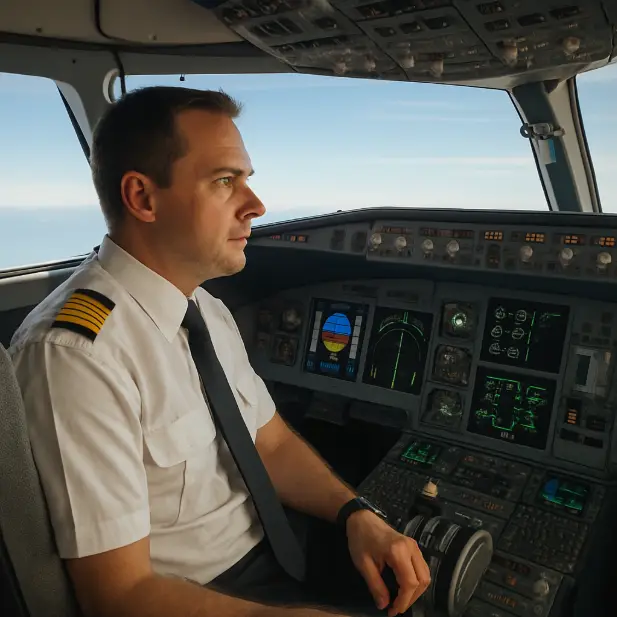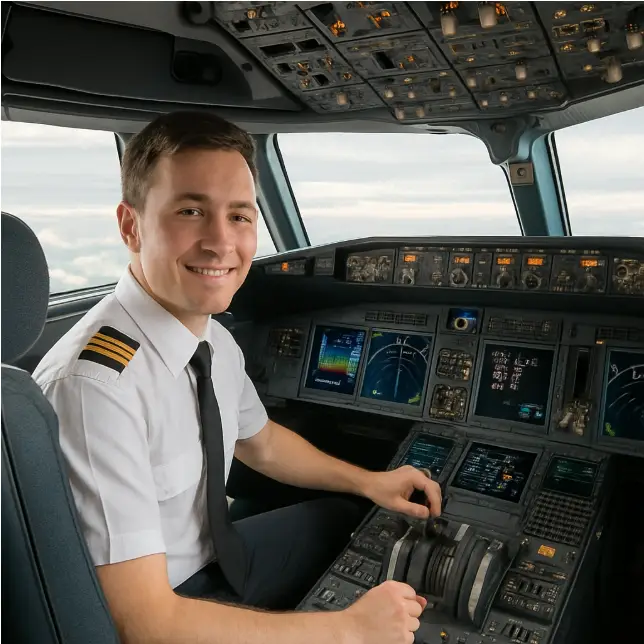Important Radio Calls to Save Your IFR Flight

- aviatorpro_6714
Navigating the skies as an Instrument Flight Rules (IFR) pilot requires a mastery of radio communications. Radio calls are crucial for maintaining safety and efficiency in the air. Whether you’re a professional pilot or just starting in ground school, understanding essential IFR radio calls can make all the difference in your flight experience. These calls are not just about protocol; they are about creating a reliable communication link between the pilot and air traffic control (ATC) to ensure that all aircraft can safely share the skies.
Understanding IFR and Radio Communication
Instrument Flight Rules (IFR) refer to the regulations and procedures for flying aircraft when visual reference is limited or impossible. This might happen in poor weather conditions, such as heavy fog, clouds, or precipitation, or even during nighttime when visual cues are less discernible. Under these conditions, pilots rely heavily on their instruments and radio communications to navigate safely. The ability to interpret instrument readings accurately while coordinating with ATC through radio calls is a fundamental skill for IFR pilots.
Why Radio Calls Matter
Radio calls are a lifeline for pilots. They keep you connected with air traffic control (ATC), ensuring everyone in the airspace is on the same page. This coordination helps prevent mid-air collisions and allows for efficient traffic management. In congested airspace, effective radio communication can mean the difference between a smooth flight and potential hazards. Furthermore, radio calls are essential for relaying real-time information about your flight status, intentions, and any unforeseen changes that may arise, ensuring all parties are informed and prepared to respond accordingly.
Essential IFR Radio Calls
Learning the essential IFR radio calls is a significant step in your journey as a pilot. These calls help you communicate effectively with ATC and other pilots. Let’s explore some of the most important ones. Mastery of these calls not only builds confidence in your communication skills but also enhances your situational awareness, which is crucial in maintaining flight safety and efficiency under IFR conditions.
1. Clearance Delivery
Before you even start your engines, you’ll need to obtain clearance from ATC. The clearance delivery call sets the stage for your entire flight. It includes your flight plan, route, altitude, and any restrictions. This initial call is critical as it ensures that both the pilot and ATC are synchronized on the flight path and any potential airspace constraints or weather considerations that could impact the flight.
Example:
“Chicago Clearance, N123AB, IFR to New York, ready to copy.”
2. Taxi Instructions
Once you have your clearance, it’s time to taxi to the runway. Taxi instructions will guide you safely to your departure point. Understanding these instructions is vital as airport layouts can be complex, and a wrong turn could lead to dangerous situations. Pilots must pay close attention to these directions to avoid runway incursions, which are a significant safety hazard.
Example:
“Chicago Ground, N123AB, taxi with information Bravo.”
3. Takeoff Clearance
Before taking off, you’ll need permission from the tower. This call ensures that the runway is clear and safe for your departure. Takeoff clearance is more than just a go-ahead; it is a confirmation that both the pilot and ATC are aware of the current runway status and any potential traffic conflicts, ensuring a safe and orderly departure.
Example:
“Chicago Tower, N123AB, holding short Runway 27, ready for departure.”
4. Departure Frequency
Once airborne, you’ll be handed over to departure control. This call helps ATC monitor your initial climb and transition to your en route phase. Establishing contact with departure control is crucial for maintaining situational awareness and receiving any updates on weather or traffic that could affect your flight path during the climb-out.
Example:
“Chicago Departure, N123AB, climbing through 2,000 for 5,000.”
En Route Radio Calls
Flying under IFR means you’ll likely spend a lot of time on en route radio calls. These communications keep ATC informed of your progress and any changes in your flight plan. Consistent and clear communication during the en route phase ensures that both the pilot and ATC can respond promptly to any changes in weather conditions, air traffic, or other unforeseen circumstances.
5. Position Reporting
Position reporting is vital when flying over areas with limited radar coverage. It helps ATC keep track of your aircraft’s location. This is especially important in remote or oceanic areas where radar coverage is sparse, ensuring that ATC has an accurate picture of your position and intentions, which is critical for traffic separation and collision avoidance.
Example:
“Chicago Center, N123AB, level at flight level 250, over Peoria VOR.”
6. Requesting Altitude Changes
You may need to request an altitude change due to weather or turbulence. This call ensures ATC is aware of your intentions and coordinates accordingly. By communicating your need for an altitude change, you help ATC manage airspace efficiently and ensure that your aircraft remains on a safe and optimal flight path.
Example:
“Chicago Center, N123AB, request climb to flight level 270 due to turbulence.”
7. Holding Instructions
Occasionally, you’ll receive holding instructions if ATC needs to delay your approach. This call confirms the holding pattern and any specific instructions. Holding can be necessary due to traffic congestion or weather issues at your destination, and clear communication ensures that you maintain the correct position and timing to re-enter the approach sequence safely.
Example:
“Chicago Center, N123AB, holding at Peoria VOR, as published.”
Approach and Landing Radio Calls
As you approach your destination, precise communication becomes even more critical. Approach and landing radio calls help you transition safely from cruising altitude to the runway. These calls are essential for coordinating with ATC to manage traffic flow into the airport and ensure that all landing procedures are executed safely and efficiently.
8. Approach Clearance
Approach clearance sets you up for landing. It includes the type of approach and any additional instructions. This clearance is crucial as it provides the pilot with the necessary information to align the aircraft with the runway and prepare for a safe landing, taking into account any changes in weather or air traffic.
Example:
“Chicago Approach, N123AB, inbound on the ILS Runway 27.”
9. Final Approach
When on final approach, this call notifies the tower of your position and confirms clearance to land. This communication ensures that the runway is clear and that your landing sequence is properly managed in relation to other air traffic, minimizing the risk of runway incursions or go-arounds.
Example:
“Chicago Tower, N123AB, on final Runway 27, gear down.”
10. After Landing
After touchdown, you’ll need to clear the runway and contact ground control for taxi instructions to your parking location. This final call in your flight sequence ensures that you vacate the runway promptly and safely, allowing other aircraft to land or take off, and guides you to your final parking position at the airport.
Example:
“Chicago Ground, N123AB, clear of Runway 27, taxi to the ramp.”
Tips for Effective Radio Communication
To ensure smooth communication, practice these tips:
- Listen Before You Speak: Always listen before transmitting to avoid talking over others. This practice helps maintain an orderly flow of communication and ensures that important instructions are not missed.
- Be Clear and Concise: Use standard phraseology and avoid unnecessary words. Clear communication helps prevent misunderstandings and ensures that ATC can quickly process and respond to your requests.
- Stay Calm: Keep a calm and professional tone, especially in high-pressure situations. Maintaining composure ensures that both you and ATC can make sound decisions, even when faced with challenges.
Conclusion
Mastering essential IFR radio calls is a critical skill for any pilot. These communications keep you connected with ATC, ensuring safety and efficiency throughout your flight. Whether you’re a seasoned professional or just starting in ground school, understanding these radio calls will enhance your flying experience and contribute to safer skies. By consistently practicing these radio calls and integrating them into your routine, you’ll be better prepared to handle any situation that arises during your IFR flights. This preparation not only builds your confidence but also supports a culture of safety and professionalism in aviation. Happy flying!



